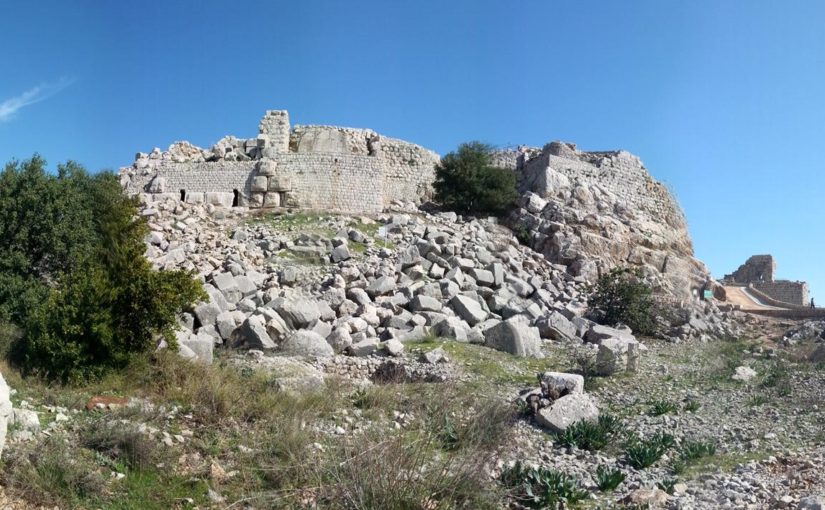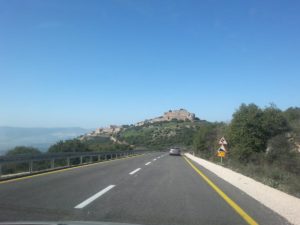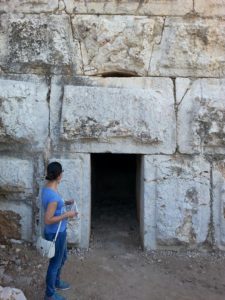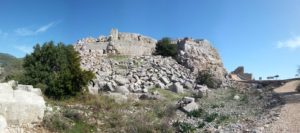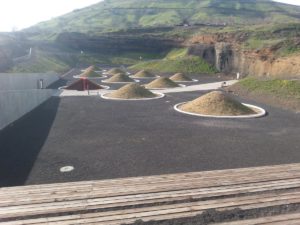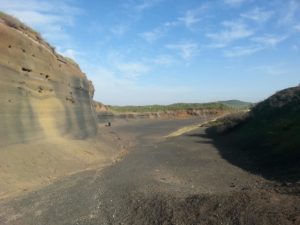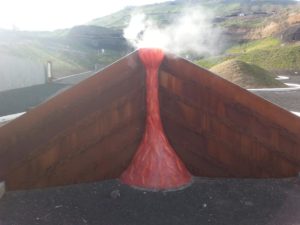
Golan Heights, Israel
Hi,
Second day of Atza and mine first wedding anniversary!
Today trip had the same subject of yesterday – Volcanoes and Yum Kippur war on the Golan Heights.
But first!….
A visit in the real place for my wedding proposal – Nimrod Fortress. My Wedding proposal story line was that the princess (Atzva) lost her way and was kidnapped by a Dragon. And what is the best place for a dragon to live in if not in a Castle. And moreover, what is the best place for devoted knight to save the princess and to ask her to marry him if not in a Castle? =)
Anyway – The whole plane was canceled due to the fact that the castle was closed because of the heavy snow…. =/
After the castle, we visited in a memorial for Oz 77 Armory brigade, that fought in the Valley of tears, and finished in the Volcanic Park near Avital Mountain and a big nice launch in Golan Brew house =) We went home tired but happy.
Take Care
Gad
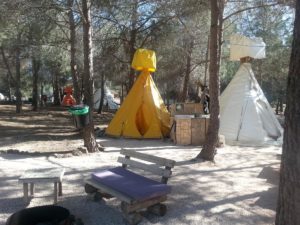 The Indian tent in which we passed the night in Sha’al. The Big one is for sleeping and small one is restroom and a shower.
The Indian tent in which we passed the night in Sha’al. The Big one is for sleeping and small one is restroom and a shower.
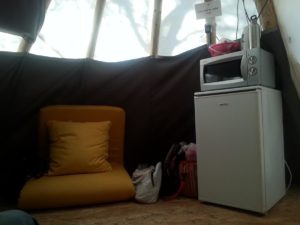
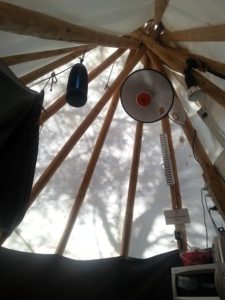 An Indian tent, but well equipped.
An Indian tent, but well equipped.
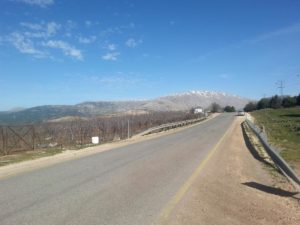 The view of Mount Hermon on the north of Golan Heights
The view of Mount Hermon on the north of Golan Heights
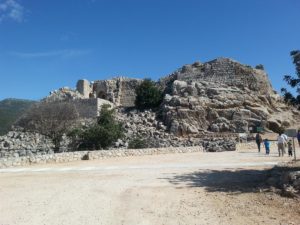 The entrance to Nimrod Fortress form west
The entrance to Nimrod Fortress form west
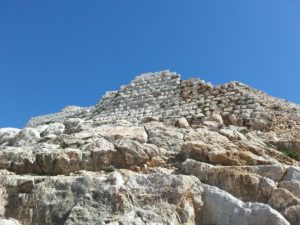 Inscription on the Western tower – An inscription at the top of the tower attests to its construction in the 627th year of the Hijra (1230)
Inscription on the Western tower – An inscription at the top of the tower attests to its construction in the 627th year of the Hijra (1230)
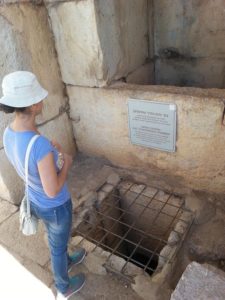 Atzva watching the cistern. The cistern supplied water to those arriving at the fortress. Above it was a portcullis (lift shaft) for raising water to the upper stories.
Atzva watching the cistern. The cistern supplied water to those arriving at the fortress. Above it was a portcullis (lift shaft) for raising water to the upper stories.
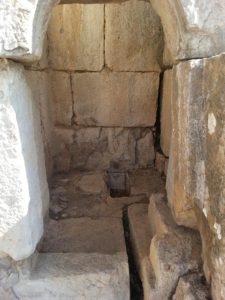 Convenience chamber, probably for the convince of the guards
Convenience chamber, probably for the convince of the guards
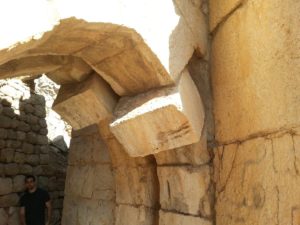
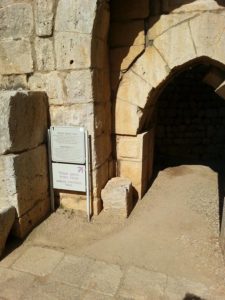 Western Gate to Nimrod Fortress – An inscription above the arch assigns the construction of the fortress to Ottoman, son of the great Sultan El-Malik El-Adel in the 627th year of the Hijra (1230). The tower above this gate was enlarged in 1275. A second floor was added and and the entrance was blocked. Several sections of the gate were destroyed by an earthquake, which also caused the dislodging of some of the arch stones.
Western Gate to Nimrod Fortress – An inscription above the arch assigns the construction of the fortress to Ottoman, son of the great Sultan El-Malik El-Adel in the 627th year of the Hijra (1230). The tower above this gate was enlarged in 1275. A second floor was added and and the entrance was blocked. Several sections of the gate were destroyed by an earthquake, which also caused the dislodging of some of the arch stones.
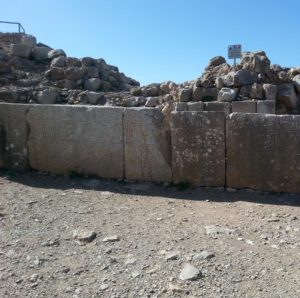 decorated inscription from the time of Sultan Baybars – In the inner section of the tower gate revealed the remains of an embellished inscription from the time of the Mameluk Sultan, Baybars, dating to 1275. The inscription, originally set at the top of the tower, was shattered during an earthquake which devastated the fortress. Most of the broken fragments were recently stored and are now displayed alongside the path.
decorated inscription from the time of Sultan Baybars – In the inner section of the tower gate revealed the remains of an embellished inscription from the time of the Mameluk Sultan, Baybars, dating to 1275. The inscription, originally set at the top of the tower, was shattered during an earthquake which devastated the fortress. Most of the broken fragments were recently stored and are now displayed alongside the path.
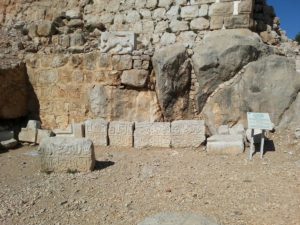 Lion Relief – The lion was the royal symbol of the Mamluk Sultan Baybars, who ruled from 1260 to 1277. The lion in this relief adorned the southwestern entrance to the tower, together with an inscription that can be seen in the base of the relief.
Lion Relief – The lion was the royal symbol of the Mamluk Sultan Baybars, who ruled from 1260 to 1277. The lion in this relief adorned the southwestern entrance to the tower, together with an inscription that can be seen in the base of the relief.
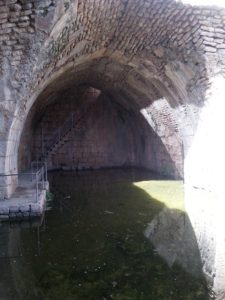 The Large Water Cistern – Water supply depended upon the accumulation of rain water in cisterns. This, the largest and most impressive cistern of the fortress, was roofed and plastered to prevent permeation, evaporation, and contamination of the water, A staircase in its northern section gave access to the bottom, an additional entrance was opened in the south, with drinking-fountain close by.
The Large Water Cistern – Water supply depended upon the accumulation of rain water in cisterns. This, the largest and most impressive cistern of the fortress, was roofed and plastered to prevent permeation, evaporation, and contamination of the water, A staircase in its northern section gave access to the bottom, an additional entrance was opened in the south, with drinking-fountain close by.
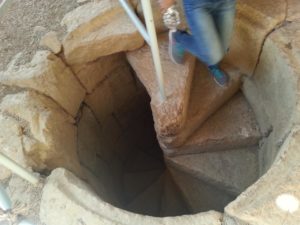 The staircase going down to the Large Water Cistern
The staircase going down to the Large Water Cistern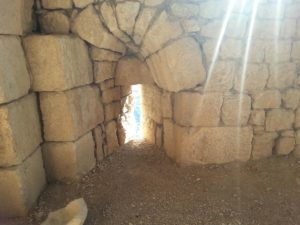 An arrow slit
An arrow slit
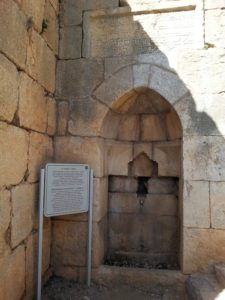 Drinking-Fountain (“Sabil”) – Water flowing trough a pipe led from the cistern to the drinking fountain. A dedicatory inscription above it reads: “In the name of the merciful Allah, this blessed plave was renovated in the days of our master, the learned, righteous Sultan, who fought in the holy war…. El-Malik El-Sa’id Fahar Aladin Hassan, the son of our Lord Sultan El-Malik El-Aziz Ammad El-Din Uthman, son of El-Malik El-Adel Abu Bakker, son the Ayyub… in the 637th of of the Hijra” (1239/1240)
Drinking-Fountain (“Sabil”) – Water flowing trough a pipe led from the cistern to the drinking fountain. A dedicatory inscription above it reads: “In the name of the merciful Allah, this blessed plave was renovated in the days of our master, the learned, righteous Sultan, who fought in the holy war…. El-Malik El-Sa’id Fahar Aladin Hassan, the son of our Lord Sultan El-Malik El-Aziz Ammad El-Din Uthman, son of El-Malik El-Adel Abu Bakker, son the Ayyub… in the 637th of of the Hijra” (1239/1240)
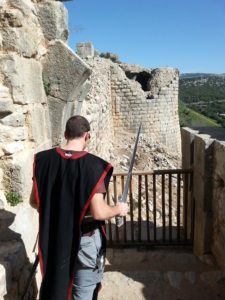 Watching over the entrance path- Non will cross!
Watching over the entrance path- Non will cross!
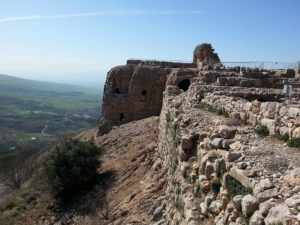 The Southwestern tower, look on the different types of the rocks that used to built it.
The Southwestern tower, look on the different types of the rocks that used to built it.
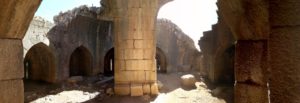 The Octagonal Tower – The tower forms a semicircular projection from the fortress wall. It was built by Sultan Baybars in the second half of the 13th Century. This tower is particularly attractive. Note the well-chiseled stones, the shape of the loop hold the gradual change from its octagonal walls to the annular vaulted ceiling.
The Octagonal Tower – The tower forms a semicircular projection from the fortress wall. It was built by Sultan Baybars in the second half of the 13th Century. This tower is particularly attractive. Note the well-chiseled stones, the shape of the loop hold the gradual change from its octagonal walls to the annular vaulted ceiling.
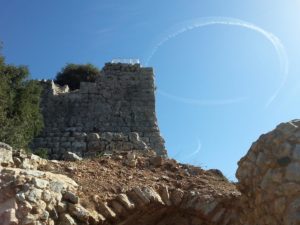 The Keep (and a hole in the sky) of Nimrod Fortress- Refereed to as “Bashura” by the builders. The keep was probably the first stage of the fortress construction. It consisted of six square towers and a wall protected by a moat. The building of the Keep is tributed to Sultan El-Aziz Uthman, in 1227-1228. In the late 13th century, the keep was enlarged and round towers were added
The Keep (and a hole in the sky) of Nimrod Fortress- Refereed to as “Bashura” by the builders. The keep was probably the first stage of the fortress construction. It consisted of six square towers and a wall protected by a moat. The building of the Keep is tributed to Sultan El-Aziz Uthman, in 1227-1228. In the late 13th century, the keep was enlarged and round towers were added
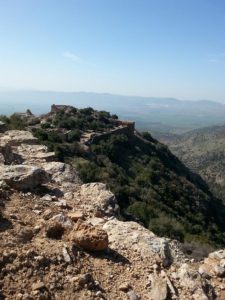 Looking west from the keep to the rest of the fortress
Looking west from the keep to the rest of the fortress
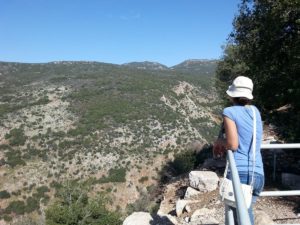 Atzva looking east from the keep Mount Hermon and Wadi Guvta.
Atzva looking east from the keep Mount Hermon and Wadi Guvta.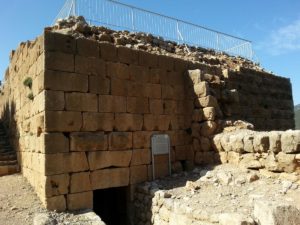 The Northern Tower – This tower was built in the northern part of the wall, overlooking the Guvta Wadi, and served for defense and observation purposes. It was probably built by Sultan Bayvars, at the end of the 13th Century, during the last stage of renovation. The building is particularly attractive, some researchers believe that it served as a prison during the 15th century. From its roof one can see Mount Hermon and Mount Dov, and the Guvta Wadi.
The Northern Tower – This tower was built in the northern part of the wall, overlooking the Guvta Wadi, and served for defense and observation purposes. It was probably built by Sultan Bayvars, at the end of the 13th Century, during the last stage of renovation. The building is particularly attractive, some researchers believe that it served as a prison during the 15th century. From its roof one can see Mount Hermon and Mount Dov, and the Guvta Wadi.
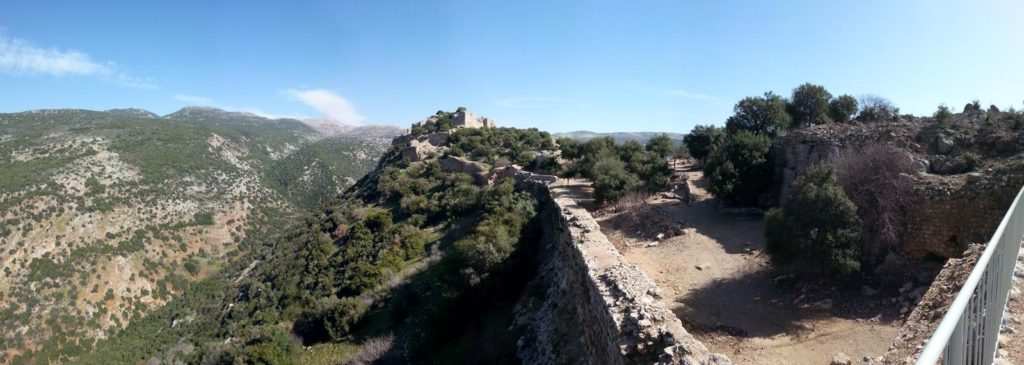 Looking east from the northern Tower of Nimrod Fortress to the Keep and Mount Hermon and Guvta Wadi.
Looking east from the northern Tower of Nimrod Fortress to the Keep and Mount Hermon and Guvta Wadi.
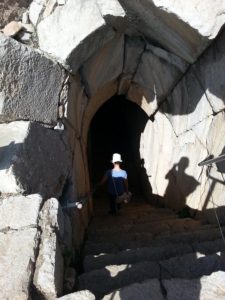 Atzva going down the secret passage that leads from the Western gate to outside the walls.
Atzva going down the secret passage that leads from the Western gate to outside the walls.
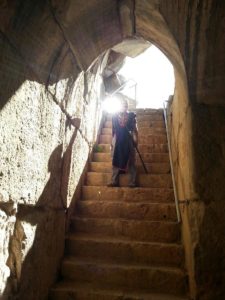 The knight! going down the staircase =) – Nimrod Fortress
The knight! going down the staircase =) – Nimrod Fortress
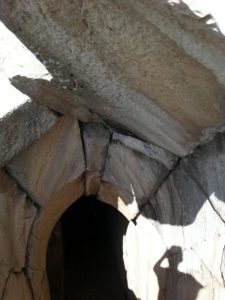
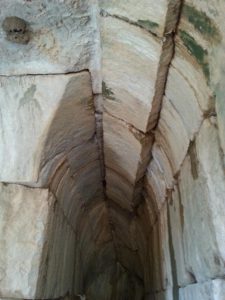
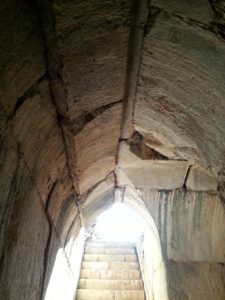 Devoted stones in the arch. The stones moved due to an earthquake.
Devoted stones in the arch. The stones moved due to an earthquake.
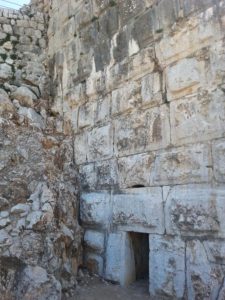 The exit of the secret passage outside the walls.
The exit of the secret passage outside the walls.
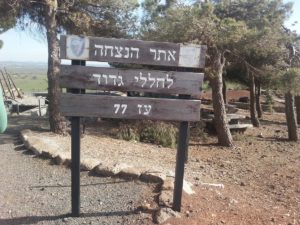 The sign of the memorial for Brigade Oz 77.
The sign of the memorial for Brigade Oz 77.
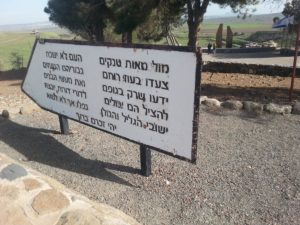 “In front of hundreds of tanks
“In front of hundreds of tanks
They marched with high spirit
they knew that only with their body
they can save
the settlements of the Golan and the Galilee
The people will not forget
their heroes
and the acts of the sons
forever will remember
that the died but not for nothing
They memory will be blessed”

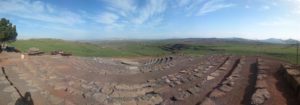 The Valley of tears from the memorial
The Valley of tears from the memorial
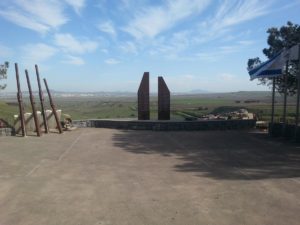 The memorial and behind it the valley of tears
The memorial and behind it the valley of tears
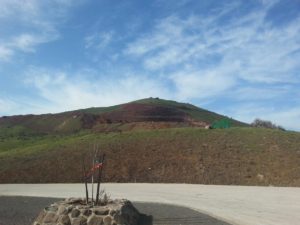 Mount Hermonit – north of the the memorial
Mount Hermonit – north of the the memorial
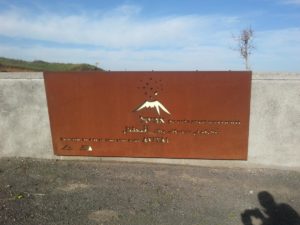 The sign of Volcanic Park in Avital
The sign of Volcanic Park in Avital
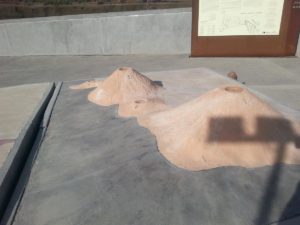 Avital and Bental mountains 100,000 years ago.
Avital and Bental mountains 100,000 years ago.
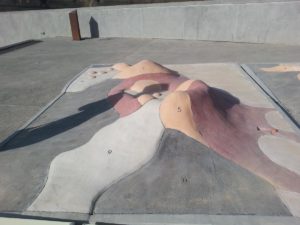 Avital and Bental mountains today.
Avital and Bental mountains today.
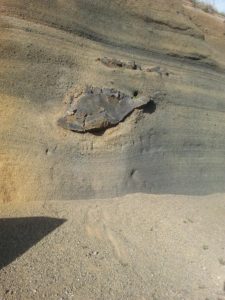
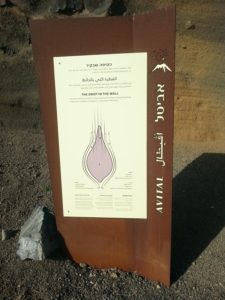 The drop on the wall – a large basalt drop indicating a very high flying block of lava and its complete consolidation in a drop shape while falling.
The drop on the wall – a large basalt drop indicating a very high flying block of lava and its complete consolidation in a drop shape while falling.
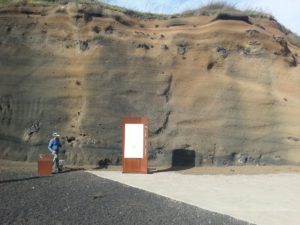
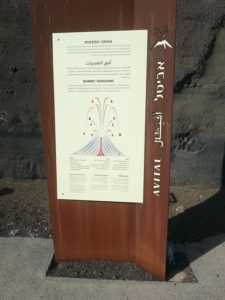 Bombs’ Horizons – A horizon of large bombs within Scoria beds usually indicates a strong eruption capable of discharging large pieces. Pay Attention to the two bomb horizons that indicate two intense eruptions during the history of the volcanic activity.
Bombs’ Horizons – A horizon of large bombs within Scoria beds usually indicates a strong eruption capable of discharging large pieces. Pay Attention to the two bomb horizons that indicate two intense eruptions during the history of the volcanic activity.
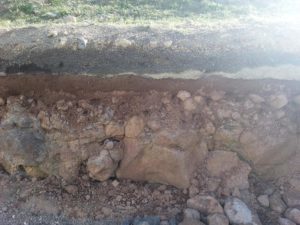
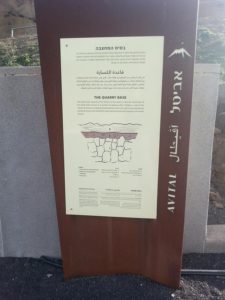 The Quarry base – The Basalt layer exposed at the bottom of the quarry is also the actual base of the whole Avital Volcano. It is overlain by paleosol which indicates a cease in the volcanic activity, thus enabling the development of the soil. Later on the paleosol was overlain by scoria which started the violent period of pyroclastic eruptions of the Avital Volcano.
The Quarry base – The Basalt layer exposed at the bottom of the quarry is also the actual base of the whole Avital Volcano. It is overlain by paleosol which indicates a cease in the volcanic activity, thus enabling the development of the soil. Later on the paleosol was overlain by scoria which started the violent period of pyroclastic eruptions of the Avital Volcano.
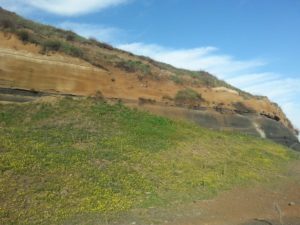
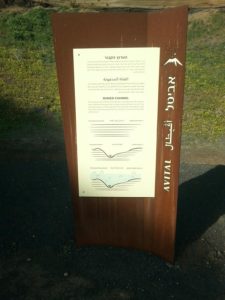 Buried Channel – An interruption in the continuity of the light layers in the upper part of the sequence may be observed in the quarry wall; a triangle consisting of brown soil with its tip pointing downwards is in fact responsible for the interruption. The triangle is a result of an ancient channel excavated within the Scoria beds. The channel was later filled with brown soil.
Buried Channel – An interruption in the continuity of the light layers in the upper part of the sequence may be observed in the quarry wall; a triangle consisting of brown soil with its tip pointing downwards is in fact responsible for the interruption. The triangle is a result of an ancient channel excavated within the Scoria beds. The channel was later filled with brown soil.
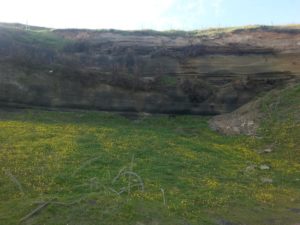
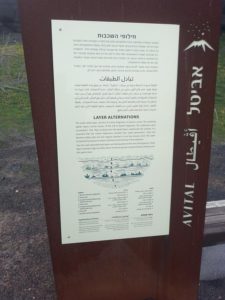 Layer Alternations – The lower black consists of cores fragments of porous scoria. The overlying lighter layers consist mainly of fine Tuff of basalt fragments. The explosions were so powerful that they crushed even the basalt layers underneath the volcano. It is assumed that the violent explosions resulted from water penetration from the Kuneitra Vally Lake into the magma chamber or into the volcanic neck. The water increased the amount of steam and hence the intensity of the explosion.
Layer Alternations – The lower black consists of cores fragments of porous scoria. The overlying lighter layers consist mainly of fine Tuff of basalt fragments. The explosions were so powerful that they crushed even the basalt layers underneath the volcano. It is assumed that the violent explosions resulted from water penetration from the Kuneitra Vally Lake into the magma chamber or into the volcanic neck. The water increased the amount of steam and hence the intensity of the explosion.
Two thin well cemented hard layers are distinguished within the tuff sequence. These layers maintain high humidity which enhances growth of green bushes shading over thin green moss.
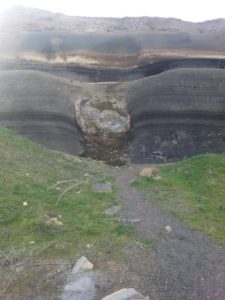
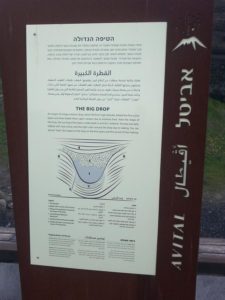 The big drop – An impact of a large volcanic drop, which fell from high altitude, folded the fine Scoria layers and then baked them upon contact due to extreme heat. Note the shape of the drop, the curving of the layers underneath it and the “sinkhole” formed and later refilled with new scoria, and the light color around the drop due to baking. You can almost “hear” the impact of the drop on the fine layers and the sound of their baking.
The big drop – An impact of a large volcanic drop, which fell from high altitude, folded the fine Scoria layers and then baked them upon contact due to extreme heat. Note the shape of the drop, the curving of the layers underneath it and the “sinkhole” formed and later refilled with new scoria, and the light color around the drop due to baking. You can almost “hear” the impact of the drop on the fine layers and the sound of their baking.
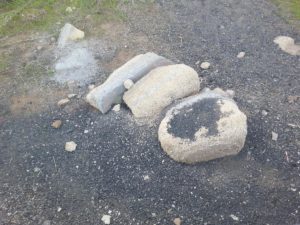
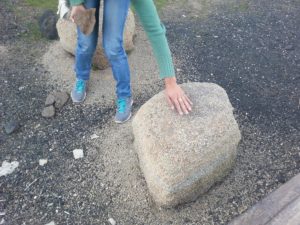 Atzva is excited over the big pieces of Tuff
Atzva is excited over the big pieces of Tuff
Running from Sha’al to Odem

